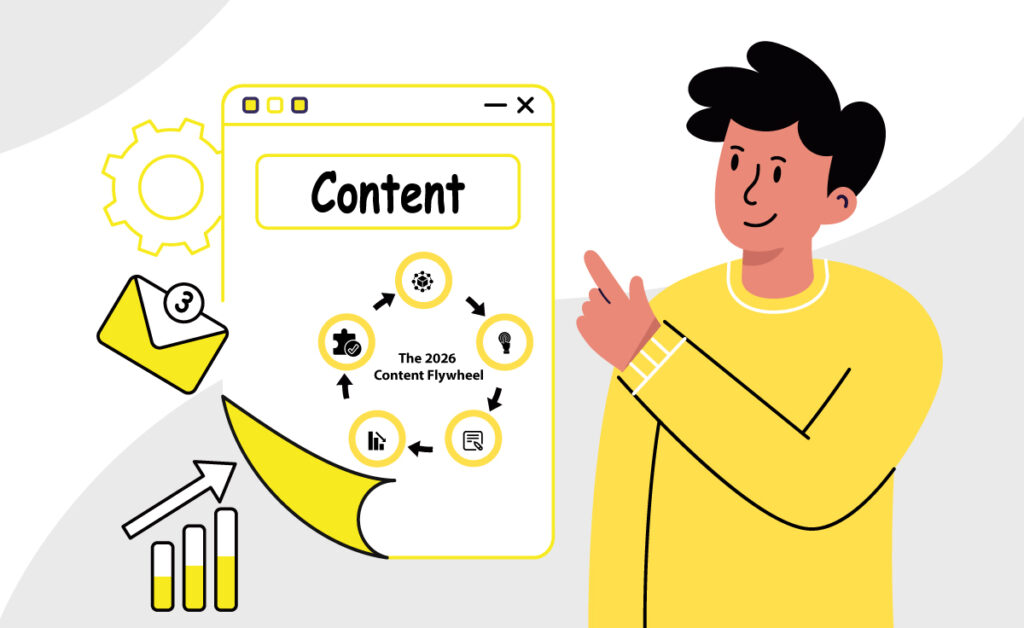Well let’s get this one fact straight. Most of us who are writing today are trying to get some benefits out of that writing. We either want to rank high on Google, or want loads of traffic from that content to our website.
In short, everyone is trying to get some Google love for their content through which they can reach their targeted audience. That in very basic terms is what I would call SEO copywriting.
Let’s understand this a little bit better SEO and website copywriting
SEO and Website copywriting can be explained simply as this – writing with the intent of getting ranked by Google. This is how it is done –
- You find keywords that you know rank well for your category
- You write content around the keyword
- You share it in different places and get people to share it to so that there is valuable traffic coming to your website.
- You also want Google to rank you for that particular keyword.
That is what people the world over are doing. And yet as Brian Clark of Copyblogger points it out that “If there’s any one thing that can be said about SEO with certainty, it’s that it manages to cause a lot of confusion.”
A lot of people even today get SEO and website copywriting completely wrong. One of the main reasons for that is the world over there are millions and zillions of SEO agencies who want nothing but a tribe of copywriters who can churn out endless articles of 500-1000 words.
The ultimate aim of these website and SEO copywriting articles or content is this:
Use the keyword that is relevant for the client business and use the content in several places around the Internet to get traffic.
The end result that we all want from this sort of SEO writing or SEO articles is this –
The client should rank on Google for that particular keyword.
Is that; wrong. Well definitely no. We are all in it for the same thing.
So what is wrong?
While this sort of keyword-pushing SEO content writing has been happening for a long time, Google decided to get smarter with the sort of content it was bringing to its people.
And there is enough reason for it:
- When it comes to search, Google is the godfather.
- Being the largest search engine, Google sends more traffic to your site than anyone else.
Google has even created a whole course to make you understand what Google wants from your content.
Here are the main points that Google highlights:
- Create quality content that is useful for everyone.
- Make it exciting and engaging
- Do your research well and write the good stuff.
- Don’t bother with rubbish writing.
- Write content that is unique. Don’t copy paste.
So now that we know what Google wants, let’s understand more about how we can write for the search engines.
We all know that Google and its algorithms are getting better by the day. Their engineers admit to releasing over 500 changes in a year – that’s almost two a day. These are changes that aim to increasingly put forward content that people perceive as valuable.
Some are minor like Google experimenting with the change in colour of its links from blue to black to major ones, like giving a boost to mobile friendly updates. Between the Panda, Penguin, Hummingbird and Pigeon updates (may be they’ll get creative and name the new ones Drogon, Rhaegal and Viserion soon), the one fact that remains unchanged is this-
Google wants you to write content that is of good quality and original keeping people in mind.
If you are reading this article, you probably want to create powerful, targeted content that can convert these readers into customers. And the steroid that’s going to accelerate your reach and put your content in front of them – when they are looking for it – is SEO.
If you are in the mode of writing SEO articles and blogs where you simply stuff it up with keywords without paying much attention to what is getting written, it’s time to stop since you are not likely to rank for it.
Even if you do rank for a particular keyword, your visitor will most likely never visit you after the first time. Google immediately notices this and scores your content accordingly. It definitely wants to take its viewer to places where they can find relevant information.
Google explains how the process works in its very elaborate “Document scoring based on document content update”.
So what should you be doing in order to write SEO copy and also get some Google love.
The single most important factor that should influence your SEO content writing is the GOAL behind writing it.
SEO writing works with a simple equation – better ranking is equal to more traffic. What most people fail to do is ask a key question – “What happens after you get the traffic flowing?” Some sites like those thriving on advertising or affiliate marketing do have traffic as their key goal so it works for some. But it’s different for brands. Brands that put out content in their blogs need to learn to use content as a business tool – just like a presentation or sales pitch. In addition to content being original and relevant, it needs to link to your brand’s goals. It needs to create measurable impact and value in the long run for you to consider it as a front runner in your marketing arsenal.
SEO content writing is about the romance between the principles of SEO to the creativity of copy writing
Copy writing serenades, engages, appeals and finally persuades the reader into taking action. SEO requires specialized expertise with knowledge of tech that will get the content in front of readers when they are looking for it. Marry the two off in your writing and you have a winning formula.
1. Get into the “Inception” mode. Get the structure correct.
Your content should “seed” an idea for your reader to become your “customer”.
Remember the movie Inception where DiCaprio penetrated minds to plant an idea? That’s what SEO content writing is all about. Your content needs to start with an original idea, enhance and play it up until it gets their interest and in the end take them to a crescendo that’ll leave them wanting for more… more that will probably come from engaging your expertise or your brand’s with website copywriting services.
So how to do you get to do that.
Simple. By paying attention to the structure of your content. Don’t just write what comes to your head. Have an outline ready. If you have to use your keywords in the introduction itself you need to create a context for it.
For example. Your keyword is “the Best Real Estate Agents in Los Angeles”
This is how we have set the context for its use.
For the rest of the structure, think what the reader might want to know from you. Since you client here is a realtor, you might want to establish his credibility and the fact that he values his customer through the rest of the article. His clients reading this will know that this is the guy who understands the market and is ready to value what they want.
So the rest of the points can be –
Through this, you are trying to tell the reader that this guy (realtor) is someone who values what his buyer wants.
In this point, you are trying to establish that he goes out to know what his customer prefers.
This point elaborates that the realtor has done his homework and is up to date with his market information.
You are finally concluding that your client (the realtor) is not your average Joe. He is willing to stick his neck out in order to get you a good deal. In short, he is the perfect guy who will help you find the right house.
So this is what we learnt – Build your content in a way that creates the right context, plants the idea in the reader’s head and then continues to engage him through different relevant information.
If you are not sure about how to structure you content, trying Google to see what others are doing with the same title. Remember to just get inspired, and never completely rip off from another content source.
2. Remember to establish that you are different
There are probably others who have written on the same topic you are writing on. So is your blog a clever plagiarism-free recycled piece or does it have something new to offer? This seems to be one of the clear winning formulas that both search engines and readers pick. Write because it adds value and not just because you need to write.
3. What should your article length be
This question has different answers depending on what goal is. Here are a few tried and tested facts
- Blog lengths start at a minimum of 400. This length is probably enough to get you some reader engagement but it isn’t good from an SEO or social perspective.
- A medium length article ranges between 600 – 1200 words. These are OK from a SEO perspective and not too bad on social either. If it has all the other elements in place like unique content, good hook and build up, it may just work.
- Go for 2000+ words if you want to be loved by Google and readers and make your blog you’re a source of incremental traffic. Articles of this length are considered to have in depth information on the topic. A great example of such carefully researched long-form content are the ones written by Neil Patel, who runs a blog with the same name – neilpatel.com and by Brain Dean who write at backlinko.com
4. Never forget to cast the “hook” – the Headline.
Before you get your readers to your super amazing content, they’ll first have to “want” to read it. That hook is your headline. The headline or title of your article is the first thing that’ll decide if someone will click through to read your content. Did you know that 80% readers don’t get past the headline? And if that doesn’t get you thinking, stats show that traffic can vary as much as 500% based on the headline!
So how do you cast the hook?
There are different types of headlines like a simple statement, a question, a how-to, a number and a shock variant. Stats show that hooks with numbers in them (12 things you won’t believe about Jennifer Aniston) get the most attention.
Headlines that use superlatives like “top”, “ultimate” and “best” too are useful in grabbing attention. Here is a great listicle that you can use to get inspired – 102 headline writing formulas.
Now there are two things about hooking headlines –
- One is that it should be compelling enough to get your reader hooked.
- Second is it should be optimized.
What does the second part mean? It simply means that the title of your story should have the keywords you are targeting to rank for.
Brian Clark of Copyblogger points this out in one of his articles – the 5 essential elements of copywriting.
“The emphasis on keywords in the title makes practical sense from a search engine standpoint. When people search for something, they’re going to want see the language they used reflected back at them in the results. Nothing mysterious about that.”
Another thing about headlines is the character limit. Though the general belief is to have 66 characters, it actually varies based on the characters in the headline (m takes more space than i) and keyword bolding in the headline. So keeping it between 48 and 60 keeps you in the search engine’s limit.
5. SEO keywords – Your secret sauce
Structuring your content with good SEO keywords will not only provide context to search engines but also help them rate your article’s relevance to the keyword and hence how to rank you for it. Keep some of the best practices in mind.
- Select the focus keyword: Research the right primary / long tail keyword which is a mix of good volume and relevance.
- Place them and don’t stuff them: Keywords in the headline, url, meta description and a few times in the text can be good but don’t get too tricky with the image alts, link alts and bold text.
- Use variations and synonyms: Tea cups and Tea mugs are similar. Cat photos and cat pics are the same. Search engines recognize and understand this so be sure to use them when you are on the brink of keyword repetition.
- Use the complete context: An article about living room décor can include sub headlines on center table, the couch, curtains and indoor plants which will be like a connecting the dots game for search engines linking everything to a relevant and well-researched article.
6. Pay attention to Latent Semantic Indexing
This is how Google crawls your content – it finds relevant keywords and phrases and synonyms that help it understand what your article is about.
Let’s understand this a bit:
If your article is about Content writing, Google tries to understand whether it is about –
- SEO content writing
- Content writing rates
- Content writing experts
- Blog content writing
- Article content writing
The answer to this is – use LSI keywords that will immediately tell Google what you are talking about. Google will rank you higher for it.
LSI is not that difficult to incorporate in your copy. Make sure you follow these –
- If your keyword is about cars, make sure you copy is about cars and not mechanics. The search engines will want your content to relate to your title and keywords.
- Do not overuse keywords. Google knows what you are doing and might drop you like a rock.
- If you are outsourcing content, make sure the agency has good content writers who understands LSI.
7. Structure content for enhanced readability on laptop and mobile
Did you hear about #Mobilegeddon? It is also being called a few other creative names by the so called website dooms day believers when sinning non mobile-friendly websites will be annihilated with a single stroke of Google’s algorithm. Websites seem to be responsive by default these days. You can go for mobile friendly plugins or even create a mobile app for your users to gain full access to your content. Highlight the important bits using “bold” or “italics” to make content easily readable on laptops and mobile.
8. Give a clear look to your articles. Use bullets, subheads, and numbers.
OK we are back to structure again. Make your content easier to read. Break your article by using bulleted content. This builds a neater structure of your entire content and makes the viewer understand better.
Bulleted content should always have catchy headlines and phrases. They are little like arrows on a long road, telling you where you are going.
So for eg if you are article is about “Ways to save money for travel”, then we could use subheads like –
- Cut down on eating out
- Skip the movies
- Cut down on mobile internet bills
- Use public transport
- Shop online, but carefully
This bullet structure when followed through the article gives the user a finite list to look forward to. First, it makes a “promise” to something specific they’ll get by reading the entire article. It, of course provides readability where the reader can skip a point if they don’t like it too much. And strangely, our brain finds odd numbers more authentic than even ones.
Want to know more. Here is a great guide, written by Brian Clark, to writing in the bullet form – Little Known Ways to Write Fascinating Bullet Points.
9. Play it up with images.
A good featured image is worth a thousand clicks. Images are a powerful tool in a marketer’s arsenal. Other than using a powerful image that instantly grabs attention and complements the headline, here are a few SEO tips for your images.
- Give it a proper descriptive name: Use simple images to name you images which you, your reader and search engines can easily understand
- Alt tags are a must: Img alts are another way to let search engines know what your image is about. Be careful not to overstuff it with keywords though or you’ll get penalized
- Optimize your image size: Given that a reader will wait about 3 secs for a website to load, heavy images will slow you down. Use web applications like Shrink O’Matic that will help reduce the file size of your images without losing quality.
- Know where to use what type of image: GIFs are good for icons and small images. JPGS are pretty much the internet standard and work for most medium size images. PNGs work if you have a picture blog (like a recipe blog) and need to show colourful images. Between the three, JPGS generally work best.
- Use images to break your content: Give your readers’ eyes some rest and break your content section with images to keep things interesting.
If you are wondering where to find great images for free, read our earlier post –20 Websites that give stunning free images.
10. Gain trust – from search engines and readers
When writing well-researched articles, mentioning the source of some of the research adds a touch of authenticity to the article. Adding links and citing sources works well for both search engines and readers who give more weight to articles that are inclusive and have a free flow of link juice.
11. Don’t forget to localize
Let’s take an article on interior décor ideas. The ways interiors are structured differ between countries and cities and a generic article may not appeal in this case. Consider the local setting and culture before you can create an elaborate article or you’ll simply sound like an outsider who has come to preach.
12. Forget keyword density. Walk away knowing you have done your best.
Forget about keyword density. It’s probably a SEO myth. There is no indication that search engines prefer keyword density. And anyway if you want good content, keyword stuffing should be thrown out of the window.
Another very important thing to remember is always write original. Never compromise on that aspect. Make this the base for your writing and it’ll never fail you. If you are writing for your own blog, your reputation and search engine rank will both be on the line. Quality content requires time a patience to create but the reward will be well worth it.
13. Don’t forget your Call to Action (CTA)
It all boils down to this. This is your moment of truth. After your reader has given you their precious 10 mins and engaged with what you are selling, you don’t want to lose them. Your CTA is the next step that tells them what to do, when to do it and how to do it. In internet terms, the most popular ones are ‘click’, ‘sign up’ or a shop now’ button. Other CTAs include whitepaper downloads, social media shares or a simple ‘Read more’.
Most CTAs don’t work in a stand alone context. They need to be decked up a little with attractive fore text and context which needs to follow some time tested patterns.
These are
- Give them a reason: The idea is that someone will click on a CTA is if they see any non-committal benefit. You can always download the whitepaper or visit a shopping site but not have to get into the next level in the sales cycle unless you really want to.
- Offer it risk free: Want someone to start shopping on your site? Assure them that you offer a secure and trustworthy environment where they can be assured of a refund if not satisfied.
- Tell ‘em to do it NOW: ‘Shop now’, ‘Click now’, ‘Download today’ etc. are good ways to add urgency to your statement, inducing the user to take action now than later. You can have a ticking clock for a promotion with an end date and time which can also up the urgency factor
- Make it short: Unless you want to lose your probable customer mid-way during the CTA, keep it short and simple. One big benefit, may be two small ones and the way to get it. Nothing more.
- Experiment: No one CTA can guarantee you conversion. Keep one for a week and then try another. It is a wonderful learning tool for marketers to see what psyches up a customer into buying mode.
Conclusion
Creating content is an art and even though you might be having the SEO perspective in mind, never forget that at the end your content should say something useful to the reader. That’s where Google will find you and rank you.
The above techniques are based on knowledge gained through our work experience in SEO and content and hence I am sure these would help you reach out to a much wider audience and benefit your business.
If you have any more queries about SEO content writing, please feel free to leave a comment below.





